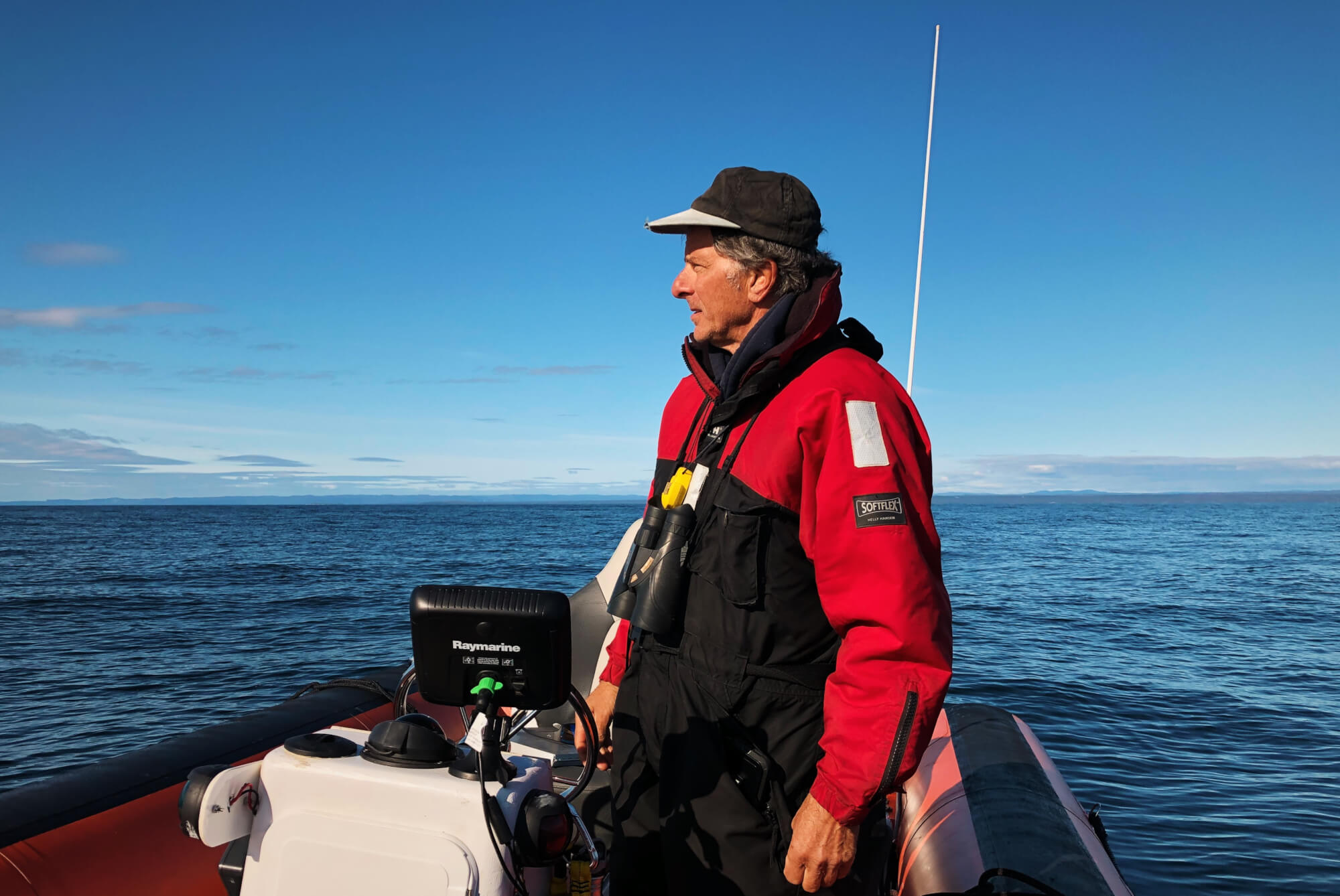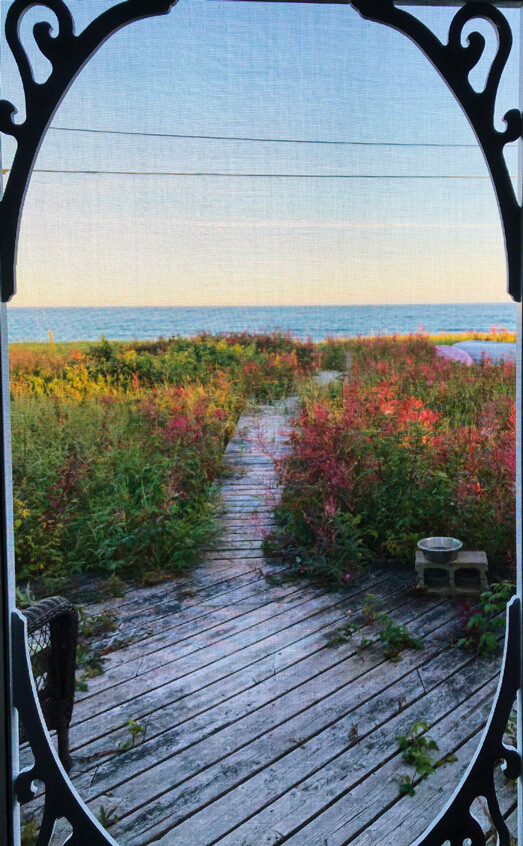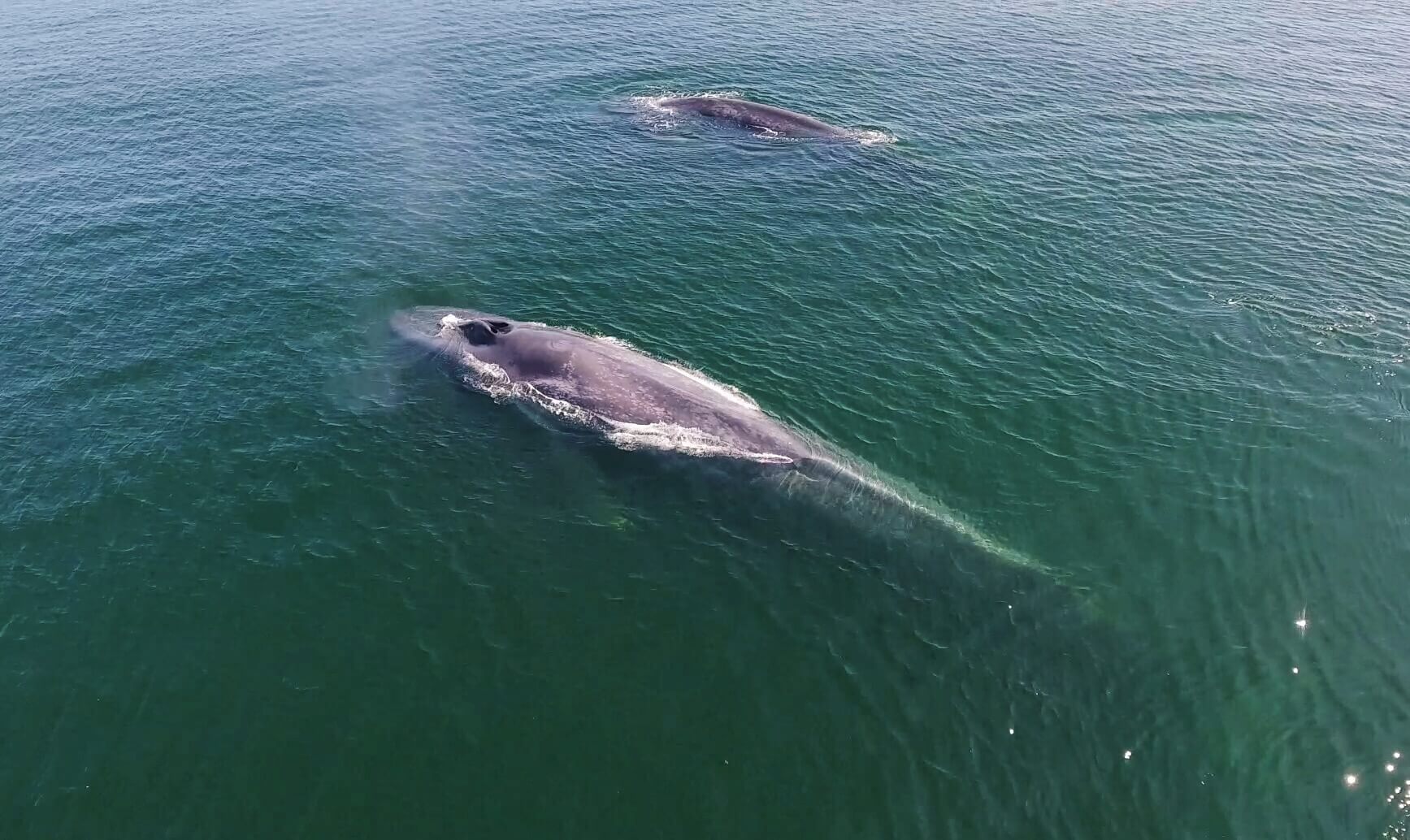This article is part of a series of portraits of people involved in some way with whales on the North Shore. Of Quebec As part of the Whale Route Documentation Project, meet these colourful characters who define the face of the region. Discover their stories that will bring you to life or relive the wonderful stories of the St. Lawrence River and its giant marine creatures!
Jacques Gélineau has been observing and collecting ID data for whales since 1997, especially blue whales, for the Mingan Island Cetacean Study amongst other groups. In addition to being an ecologist and environmentalist, this dynamic personality is also a fervent conservationist.
Jacques lives on the beach in a small house overlooking the Gulf. “A 180 degree view!” he exclaims. His parcel of sand dunes overlooking the sea is a genuine island of biodiversity.
Early in the morning, directly through his living room window, he observes from afar whale spouts and, sometimes, the tails of humpbacks. This is the time to plan his itinerary and when to set sail for the Gulf to watch whales! For almost 30 years now, he has used his Zodiac to study whales on the water, completely independently. He knows the Sept-Îles and Port-Cartier sectors better than anyone.
“Whales are the pinnacle of evolution. It’s impressive to see a warm-blooded animal adapted to harsh conditions like those of the St. Lawrence,” – Jacques Gélineau
La baie de Sept-Îles est un lieu d’alimentation exceptionnel pour l’écosystème marin. La bathymétrie favorise l’emprisonnement du krill, un peu comme une fosse d’alimentation pour les baleines. Mais ça change tous les jours, selon les marées, le vent, etc. «C’est pour ça que ça prend une présence assidue sur l’eau, pour bien comprendre les animaux, car ils sont assez imprévisibles», explique Jacques.
Inspiré dès l’enfance par Jacques-Yves Cousteau, il est fasciné par le milieu marin. C’est en arrivant en Côte-Nord en 1982 que Jacques voit ses premières baleines à Havre-Saint-Pierre.
«C’est le summum de l’évolution, les baleines. Un animal à sang chaud, adapté à des conditions hostiles comme le Saint-Laurent, c’est impressionnant», dit-il. Pendant 15 ans, il retourne voir «ses» baleines régulièrement!
Then, in 1997, he begins working as a carpenter at the Mingan Island Cetacean Study (MICS), where he builds the observation tower. MICS founder and researcher Richard Sears thanks him by offering him a small Zodiac so he can begin tracking marine mammals under his supervision.
Hundreds of animals have been photographed, identified and catalogued by Jacques. Over the years, his relentless observations have provided him with a better understanding of whales in the region and a unique relationship with these marine mammals.
“The Gulf is their feeding grounds. When they arrive in spring, they are thin. Then, in fall, they are plump and energetic enough to dazzle observers with their acrobatics such as late-season tail slapping.”
A big nature-lover, Jacques Gélineau’s main objective in life is to protect “Mother Earth”, he says. For him, whales – being major representatives of several trophic links – offer a window to understanding the state of health of the planet.
“When whales arrive, we can imagine that everything is good below.”
Working in collaboration with MICS, Jacques aims to promote a better understanding of whales through his observations. “Only rigour and empirical data will help to better understand cetaceans,” says Jacques.
“It’s like studying the tip of an iceberg without ever being able to see what’s going on below. We are only able to observe them near the surface given how the water is nearly opaque due to its high productivity. Just 5% of their life cycle is spent breathing at the surface… It’s the other 95% that we simply cannot see with our eyes. We can only estimate,” he explains.
The cetacean inventory is impressive and his house is packed with images, whale trinkets, navigation charts, camera lenses, tripods and photographs. He is driven by passion and especially by the palpable desire to help cetaceans survive on our planet.
As blue whales are the most vulnerable, they receive a little extra attention in surveys and individual identification. Most of the animals observed have various scars on their bodies, in some cases from human activities such as collisions, he says in his report presented in 2017 to the Northern Environment and Occupational Health Research Institute (INREST), with which he collaborated in 2017.
Jacques tries as best he can to understand how to coexist with the giants.
“Above all, protecting cetaceans is a defined co-existence between users of the Seaway and the animals themselves,” he says.
In a way, Jacques is like an interpreter who helps translate dialogue between humans and the whales of the St. Lawrence. He sees tremendous opportunities for compromise between regional companies and cetaceans. For years, Jacques has been reporting his sightings to Whales Online for the chronicle of weekly observations.
Thank you for your contributions and kindness, Jacques!








